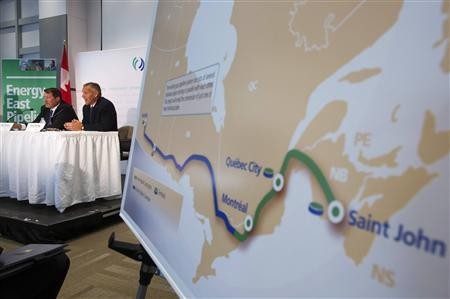Latest speculations claimed that the Energy East pipeline is worse than the proposed KeystoneXL oil pipeline.
The Energy East Pipeline is TransCanada Corporation's proposed $12 billion project will merge the existing, converted natural gas pipelines with a new pipeline construction to transport oil around 2800 miles across Canada from Alberta's tar sands fields to export terminals in Quebec and New Brunswick.
The Energy East pipeline will not totally cross into the United States, unlike TransCanada's Keystone XL pipeline proposal, which objective is to be able to ship oil from Alberta to Nebraska.
Hence, the environmentalists on each side of the borders are so alarmed since the Energy East pipeline will be carrying 1.1 million barrels of tar sands oil each day, which is 25 percent more than the Keystone XL, and it will also be the longest oil pipeline on the continent, North Dallas Gazette reported.
Energy East pipeline has been getting protest from opposition in Canada. Groups like the Council of Canadians and the Environmental Defence believe and worries that the pipeline is a threat on both sensitive ecosystems and populated areas with the risk of an oil spill.
The Extreme Energy's threat will be on the St. Lawrence River and the Great Lakes as the pipeline will be crossing the northern end of the Great Lakes, including the St. Lawrence River Basin watershed, which will impede many water systems along its way, according to Earth Talk.
TransCanada explained the details about its plans to build a port in Cacouna, Quebec, northern part of Rivière-de-Loup by St. Lawrence River according to the filed report at the National Energy Board in March 2014. Locals are very concerned for any accidents that may occur which involves either the pipeline or marine shipments within the route will put the already endangered beluga whale population at greater risk.


